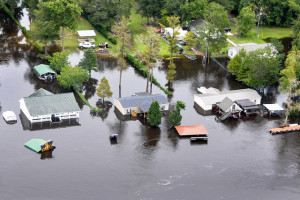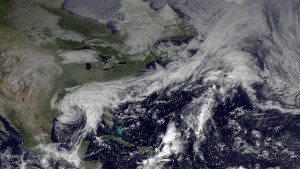The U.S. version of an old saying goes like this,“when it rains, it pours”; and large parts of America have certainly experienced heavy rainfall this year.
October 2015 brought additional precipitation; USA Today’s newspaper headline on October 6, 2015 read,
“Biblical flooding becoming more common — South Carolina’s 1-in-1000 year rain is 6th in the US since 2010.”
According to the newspaper, that “means there is a 1 in 1000 (Or 0.1%) chance” of an event “happening in any given year in a given location”.
Yet More
Two weeks later the hurricane, Patricia, began to develop in the Pacific. The weather.com website reported that by October 23rd,
“Patricia became the most powerful tropical cyclone ever measured in the Western Hemisphere.”
Its 200 mph (322 kilometers) winds surpassed the top winds of the 2005 Category 5 hurricanes Katrina and Wilma and even toppled Asian super storm Tip’s record 195 miles (314 kilometers) per hour which stood for 36 years.
But solely based on minimum atmospheric pressure, another way to gauge the ferocity of the storm, Tip retains the title of the most powerful anywhere on earth since the beginning of modern record keeping. And, Patricia would be among the top 5.
However, at least one atmospheric scientist thinks that if both the difference between ambient pressures and the pressure in the storm itself are considered, Tip and Pat might share the top spot, or so National Geographic indicated.
Mexico was hit first by Patricia, and then her remnants moved over the American gulf states already drenched by heavy rain a few days earlier. She next dumped rain on the nation’s East coast, and South Carolina dealt with flooding for the 2nd time in the same month.
Shortly after Patricia left, the gulf states were also slammed again with rain and flooding as well as tornados. But, America’s West Coast remained severely parched in October. It is counting on El Niño for relief from prolonged extreme drought.
Photo Credits: SC Flood Photo by U.S. Dept Agriculture, Patricia Photo by NASA Goddard Licenses: CC BY 2.0
Read the National Geographic article here
Prior Environment News

